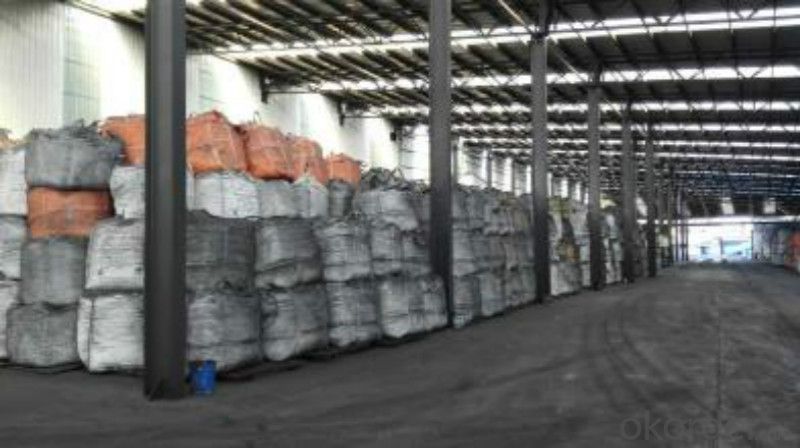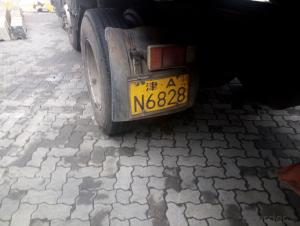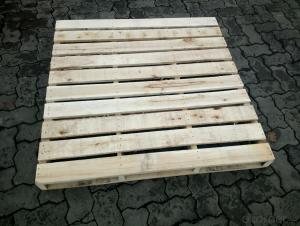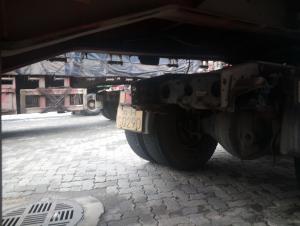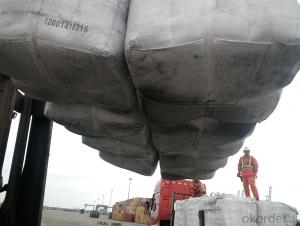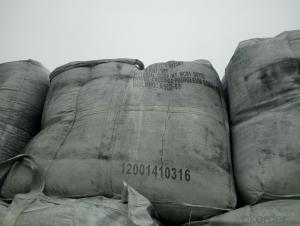Calcined Pitch Coke with size 0-10mm 90%min
- Loading Port:
- Tianjin
- Payment Terms:
- TT OR LC
- Min Order Qty:
- 21 m.t.
- Supply Capability:
- 8000 m.t./month
OKorder Service Pledge
OKorder Financial Service
You Might Also Like
Introduction
Pitch Coke/Coal Tar Pitch is a kind of black brittleness and blocky piece, lustrously at normal temperature. It has special odour and poisonous and can be easily flame when melting, second-grade inflammable solid.
Pitch Coke/Coal Tar Pitch is obtained from powerfully processed coal tar. Compared to petroleum asphalt, the adhesiveness is better. Coal Tar Pitch is high quality tar production with high fixed carbon. It has excellent adhesion, waterproofing and resistance against seawater, oil and various chemicals. In these properties, it is much better than petroleum asphalt tar.
It can be used to produce painting, electrode, pitch coke, and tar felt. It also can be used as fuel and the raw material of asphalt carbon black.
Features:
The morphology, chemistry and crystallinity of recarburisers have a major impact on the overall casting cost. The combined application and cost benefits, which are derived through the use of Desulco, enable foundries to manufacture castings in a highly cost effective manner.
reduces
Recarburiser consumption
Power consumption
Inoculant consumption
MgFeSi consumption
Furnace refractory wear
Scrap rate
Tap to tap time
Slag inclusions risk
Chill
increases
Casting microstructure
Productivity
Process consistency
Carbon Recovery
Compared with calcined petroleum coke, acetylene coke and
graphite electrode scrap, Desulco yields the highest carbon
recovery and fastest dissolution time
Specifications:
CPC | |||
F.C.% | 98.5MIN | 98.5MIN | 98MIN |
ASH % | 0.8MAX | 0.8MAX | 1MAX |
V.M.% | 0.7 MAX | 0.7 MAX | 1 MAX |
SULFUR % | 0. 5MAX | 0. 7MAX | 1MAX |
MOISTURE % | 0.5MAX | 0.5MAX | 1MAX |
Pictures:

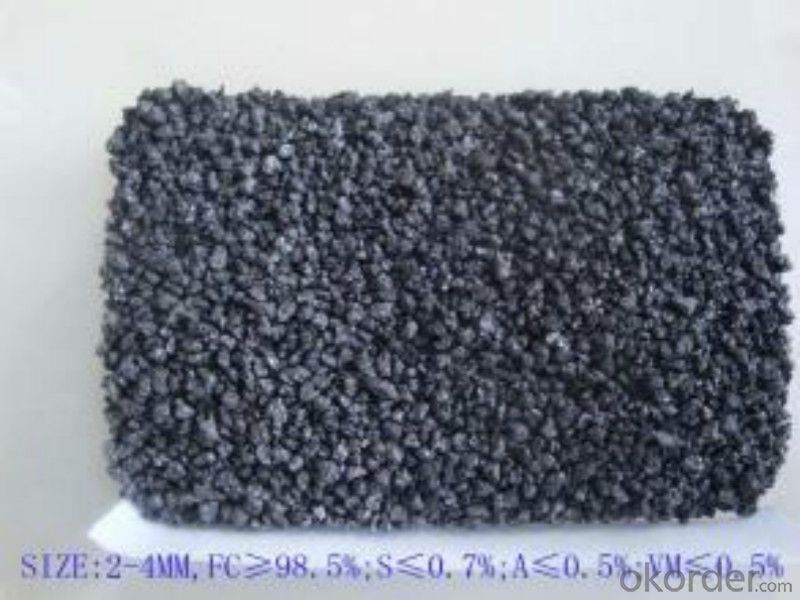

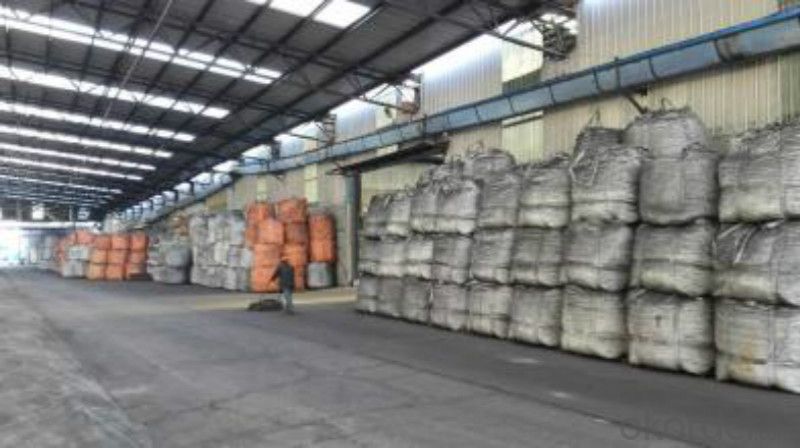
FAQ:
1.MOQ:2 Containers |
2.Size:1-3mm,1-5mm,2-6mm,3-5mm and as the customer's requirement |
3.Packing: 1 ton jumbo bag or 25kgs paper in bag |
4.Payment:T/T or L/C at sight |
5.Delivery time: within 15 days after receiving the deposit |
6.Usage: it is as carbon raiser,widely used in steelmaking,casting,casting iron,steel foundry,aluminum metallury. |
- Q: What is carbon nanoelectrode?
- Carbon-based materials, usually in the form of nanotubes or nanowires, are used to create carbon nanoelectrodes. These electrodes are incredibly small, with diameters on the nanoscale, typically ranging from a few to a few hundred nanometers. The unique properties of carbon nanoelectrodes make them highly desirable for various applications in electrochemistry. Their small size provides a large surface area to volume ratio, resulting in improved sensitivity and electrochemical performance. In addition, carbon nanoelectrodes have excellent electrical conductivity and mechanical strength, making them ideal for miniaturized electronic devices and sensors. They can be easily integrated into platforms like microfluidic systems or biosensors, enabling efficient and accurate detection of chemical or biological substances. Furthermore, carbon nanoelectrodes have demonstrated great potential in energy storage devices, such as supercapacitors and batteries. Their high electrical conductivity and large surface area facilitate rapid charge and discharge rates. Overall, carbon nanoelectrodes are an exciting advancement in the field of nanotechnology. They offer unique properties and unparalleled performance for various applications in electronics, sensing, and energy storage.
- Q: What are the effects of carbon emissions on the Earth's temperature?
- Carbon emissions contribute to the greenhouse effect, trapping heat in the Earth's atmosphere and leading to an increase in global temperatures. This phenomenon, known as global warming, has numerous adverse effects such as melting ice caps, rising sea levels, extreme weather events, and disrupted ecosystems.
- Q: What kinds of barbecue carbon do you have?
- Common carbon on the market are: flammable carbon, charcoal, carbon three mechanisms. Flammable carbon available in outdoor stores, there are two kinds of square and pie. The surface of flammable carbon has a flammable layer, which is easier to ignite than ordinary charcoal.
- Q: What are the consequences of increased carbon emissions on educational systems?
- Increased carbon emissions can have several consequences on educational systems. Firstly, the health impacts of pollution caused by carbon emissions can lead to increased absenteeism among students and teachers, affecting the overall learning environment. Additionally, extreme weather events linked to climate change, such as hurricanes or heatwaves, can disrupt educational infrastructure, leading to school closures and disruptions in academic schedules. Moreover, the need to address climate change and its impacts may require educational institutions to allocate resources and curriculum time to climate-related topics, potentially diverting attention and resources from other subjects. Finally, the long-term consequences of climate change, such as rising sea levels or increased natural disasters, may force the relocation or rebuilding of educational facilities, causing significant disruptions to students' education.
- Q: How do fossil fuels release carbon dioxide when burned?
- When fossil fuels are burned, they release carbon dioxide (CO2) as a byproduct. This process occurs due to the chemical composition of fossil fuels. Fossil fuels, such as coal, oil, and natural gas, are primarily made up of hydrocarbons, which are compounds consisting of carbon and hydrogen atoms. During combustion, these hydrocarbons react with oxygen (O2) in the air, resulting in the production of carbon dioxide and water vapor. The chemical equation for the combustion of a hydrocarbon fuel, such as octane found in gasoline, is as follows: C8H18 + 12.5O2 → 8CO2 + 9H2O In this reaction, each molecule of octane (C8H18) combines with 12.5 molecules of oxygen (O2) to produce 8 molecules of carbon dioxide (CO2) and 9 molecules of water (H2O). The carbon atoms present in the hydrocarbons of fossil fuels bond with oxygen to form carbon dioxide. This release of carbon dioxide into the atmosphere is what contributes to the greenhouse effect and global warming. The combustion of fossil fuels is a major source of anthropogenic (human-caused) carbon dioxide emissions, accounting for a significant portion of the greenhouse gases released into the atmosphere. It is important to note that burning fossil fuels also releases other pollutants, such as sulfur dioxide (SO2) and nitrogen oxides (NOx), which have detrimental effects on air quality and human health. To mitigate the negative impacts of fossil fuel combustion, efforts are being made to develop cleaner and more sustainable energy sources, such as renewable energy, to reduce our dependence on fossil fuels and decrease carbon dioxide emissions.
- Q: How are carbon nanotubes used in various applications?
- Carbon nanotubes are used in various applications due to their unique properties. They are used in electronics and semiconductors for their high conductivity, in energy storage devices for their high surface area and lightweight nature, and in medicine for drug delivery and imaging purposes. Additionally, carbon nanotubes find applications in materials science, aerospace engineering, and environmental remediation, among others, showcasing their versatility and potential impact across multiple fields.
- Q: But their chemical symbols are different, so they are different elements, different substances, but they feel the same thing... Tangled up ~!
- The difference is that one of the similarities is that the appearance is black. However, the lead section is metallic luster. Carbon density is very small, about 2G per cubic centimeter, lead density is great, the density is more than 10g per cubic centimeter. Carbon is a nonmetal that can be converted into diamond. Lead is a kind of metal. Carbon is a chemically stable substance at normal temperature. Without poison, activated carbon can be used as a gas mask. Lead is a heavy metal that is harmful to humans. The chemical properties are more lively and can be used as lead batteries. The melting point of lead is very low, only a few Baidu, and the melting point of carbon can reach more than 3000 degrees. Edison made the filament out of carbon. You know that?.
- Q: How does carbon impact the availability of freshwater resources?
- The availability of freshwater resources is impacted by carbon in several interconnected ways. Climate change is one of the primary means through which carbon affects freshwater availability. The burning of fossil fuels and other human activities result in increased levels of carbon dioxide in the atmosphere, which contributes to global warming. This warming, in turn, leads to changes in precipitation patterns, including alterations in rainfall distribution and intensity. The emission of carbon also leads to warmer temperatures, which can cause higher rates of evaporation and more frequent and severe droughts in specific regions. These droughts reduce the amount of water accessible for freshwater resources like rivers, lakes, and reservoirs. Furthermore, the shifting climate can disrupt natural water cycles, impacting the replenishment of groundwater aquifers, which are essential sources of freshwater. Moreover, the quality of freshwater resources is impacted by carbon. The increased carbon emissions reacting with atmospheric moisture result in acid rain, which acidifies freshwater bodies and renders them unsuitable for many aquatic organisms. This disruption to ecosystems can lead to the loss of species that depend on freshwater resources for their survival. Another manner in which carbon affects freshwater availability is through its influence on land use. The conversion of forests and wetlands into agricultural or urban areas releases carbon stored in vegetation and soil. This not only adds to carbon emissions but also diminishes the ability of natural ecosystems to retain and filter water. Forests, for instance, play a crucial role in maintaining the water cycle by absorbing rainfall and gradually releasing it into streams and groundwater. Deforestation disrupts this process and can result in reduced water availability downstream. In conclusion, carbon emissions have a profound impact on the availability of freshwater resources. Through climate change, carbon alters precipitation patterns, resulting in droughts and decreased water availability. It also affects the quality of freshwater through phenomena like acid rain. Moreover, land-use changes driven by carbon emissions can further diminish freshwater availability by disrupting natural water cycles.
- Q: How is carbon used in the steel industry?
- The steel industry heavily relies on carbon as it plays a crucial role in the production and enhancement of steel. Carbon is added to iron in the fundamental process that transforms it into steel, resulting in the desired properties of hardness, strength, and durability. In steelmaking, carbon is primarily used as an alloying element to improve the mechanical properties of steel. The carbon content in steel can vary depending on the desired grade and application, ranging from 0.1% to 2%. Low carbon steel, with a carbon content below 0.3%, is commonly used for applications that require good formability and weldability. On the other hand, high carbon steel, with a carbon content above 0.6%, is used for applications that demand high strength and hardness. Carbon also plays a crucial role in the heat treatment process of steel. Through carburizing, steel undergoes a heating process with carbon-rich gases or solids to increase the carbon content at the surface. This results in a hardened surface layer with improved wear resistance, while maintaining a tough and ductile core. Additionally, carbon is essential in the use of electric arc furnaces (EAFs) in steelmaking. EAFs utilize electricity to melt scrap steel and other raw materials. Carbon is introduced during this process to reduce the oxides present in the raw materials, allowing for efficient steel production. In conclusion, carbon is widely utilized in the steel industry to achieve the desired properties of steel, enhance its mechanical properties through heat treatment, and enable efficient steel production. This versatile element enables steel to be used in a wide range of applications across various industries.
- Q: What is the primary source of carbon monoxide in the atmosphere?
- The primary source of carbon monoxide in the atmosphere is the incomplete combustion of fossil fuels. When fossil fuels like coal, oil, and natural gas are burned for energy production, vehicles, or industrial processes, carbon monoxide is released into the air. In addition to human activities, natural sources such as volcanic eruptions and forest fires can also contribute to the presence of carbon monoxide in the atmosphere. However, the majority of carbon monoxide emissions can be attributed to human activities, making it an important air pollutant to address in order to protect human health and the environment.
Send your message to us
Calcined Pitch Coke with size 0-10mm 90%min
- Loading Port:
- Tianjin
- Payment Terms:
- TT OR LC
- Min Order Qty:
- 21 m.t.
- Supply Capability:
- 8000 m.t./month
OKorder Service Pledge
OKorder Financial Service
Similar products
Hot products
Hot Searches



